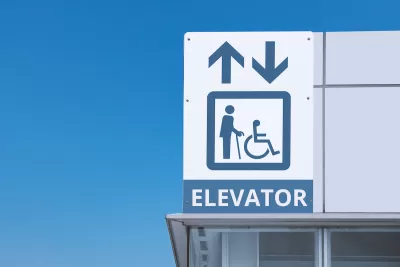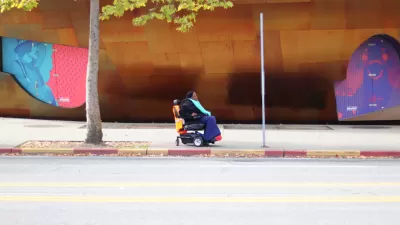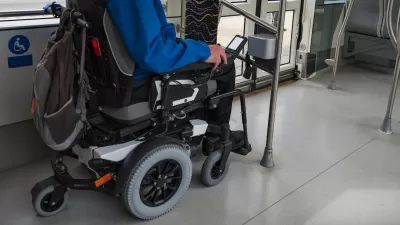Even when accessibility is taken into account, transit stations and pedestrian infrastructure often still fail to make appropriate accommodations.

Despite federal and state laws dictating that public spaces must be accessible to people with disabilities and mobility challenges, many cities in the United States and Canada remain largely inaccessible, writes Ron Buliung in a piece for The Conversation.
According to Buliung, “Access to safe and reliable public transit is one such problem. For example, many of the issues plaguing paratransit (ideally on-demand, door-to-door service for disabled persons) today — unacceptably long wait times, having to plan and schedule days in advance, service costs, convoluted trip regulations, failing to pick people up — are often as old as the services themselves.”
Public transit stations, meanwhile, often lack functional elevators and other amenities. When they do have them, they often face what Buliung calls the ‘last millimetre problem:’ “a wide gap or vertical misalignment between platforms and transit vehicles making it impossible or hazardous for some disabled persons, like my daughter, to get on or off the system.”
Bike infrastructure, too, can exclude the needs of people with disabilities by failing to provide signals for blind pedestrians, for example.
For Buliung, part of the solution is for cities to more carefully listen to the needs of people with disabilities and include them in decision-making in transportation and infrastructure projects from the beginning. “Real accountability, rather than performative empty consultation, should be the order of the day.”
FULL STORY: Despite legislative progress, accessible cities remain elusive

Planetizen Federal Action Tracker
A weekly monitor of how Trump’s orders and actions are impacting planners and planning in America.

Congressman Proposes Bill to Rename DC Metro “Trump Train”
The Make Autorail Great Again Act would withhold federal funding to the system until the Washington Metropolitan Area Transit Authority (WMATA), rebrands as the Washington Metropolitan Authority for Greater Access (WMAGA).

The Simple Legislative Tool Transforming Vacant Downtowns
In California, Michigan and Georgia, an easy win is bringing dollars — and delight — back to city centers.

Demise of Entertainment Industry Mirrors Demise of Housing in LA
Making movies has a lot in common with developing real estate: producers = developers; screenwriters = architects; directors = general contractors. The similarities are more than trivial. Both industries are now hurting in L.A.

How Public Spaces Exclude Teen Girls
Adolescent girls face unique challenges and concerns when navigating public spaces. We can design cities with their needs in mind.

Proposed Ohio Budget Preserves Housing Trust Fund
The Senate-approved budget also creates two new programs aimed at encouraging housing construction.
Urban Design for Planners 1: Software Tools
This six-course series explores essential urban design concepts using open source software and equips planners with the tools they need to participate fully in the urban design process.
Planning for Universal Design
Learn the tools for implementing Universal Design in planning regulations.
Smith Gee Studio
City of Charlotte
City of Camden Redevelopment Agency
City of Astoria
Transportation Research & Education Center (TREC) at Portland State University
US High Speed Rail Association
City of Camden Redevelopment Agency
Municipality of Princeton (NJ)





























